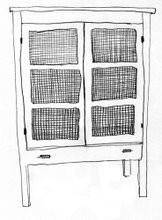
Many people who would baulk at the idea of shredding a $50 note at the end of each week don’t think twice about throwing out the equivalent amount in unused, soggy vegetables each week.
Wasted food is just one side-effect of a society that is becoming increasingly disconnected from the idea of seasonal food and thrifty kitchen practices, such as using up leftovers rather than throwing them out.
Lack of time and lack of cooking knowledge are often blamed for the increased reliance on packaged or takeaway food. But a new cookbook, The Thrifty Kitchen, by Suzanne Gibbs and Kate Gibbs, aims to inspire people to eat more healthily and cheaply at home.
Kate says the global financial crisis has helped focus people’s minds on their expenditure and be more careful with their money, and this was part of the inspiration for the cookbook.
“This is a book that needed to be done,” she says. “An enormous amount of money is being wasted by people not being strategic and planning their meals. People need to think about their food as if it’s similar to a business and not buy food if they’re not going to use it.”
The Thrifty Kitchen contains plenty of useful tips on how to shop thriftily, including how to get the best value at the supermarket, how to get your money’s worth when buying meat, and essential items to keep in the pantry.
As well as chapters on work lunches and weeknight meals that are cheaper, healthier and more delicious than takeaway, sections of the book are devoted to meals that can be made from leftovers and weekend meals to cook and keep, allowing even the busiest people to plan ahead.
“A lot of us know how to do this but we can all improve in the way we do it,” says Kate. “Be forward thinking in terms of the meals you and your family want to eat. Make a double quantity of spaghetti bolognaise and freeze some so you don’t need to get takeaway. If you cook a roast chicken for two people, you can put the leftovers in sandwiches or make a lovely pasta dish with some cream.”
While cooking your own food gives you ultimate control over what you put in your body, it is also much cheaper to cook for yourself, and using up leftovers helps reduce waste and lessens the impact on the environment. But Kate says it is important that cooking is realistically integrated into people’s day-to-day lives and the book shows people ways that they can best use their time to fit cooking into their life.
“We’ve given lots of useful advice along with the recipes, including some clever ways to be thrifty in the kitchen. We believe cooking is connecting with food. It’s about knowing what you eat and knowing how to develop and incorporate variety into your diet.”
Kate comes from a fine food pedigree: her grandmother is the doyenne of Australian cooking, Margaret Fulton OAM, and her mother, Suzanne Gibbs, is a Cordon Bleu-trained chef who published her first cookbook at 24.
Food was integral to Kate’s childhood. She and her sister would often awake to delicious cooking smells wafting from the kitchen. Over breakfast , they would plan meals for the weekend and Kate says she always wanted to be involved in the cooking.
“We’d have family days where we would go to the fish market, buy mussels and come home and make Provencal soup. It was a lovely family event. You don’t need to spend a lot of money going out somewhere – you can just all get together and cook.”
Talking to Kate, recipes flow freely throughout the conversation. While pondering the answer to a question about her favourite recipe in the book, she digresses into a quick list of ingredients to make ricotta pancakes for breakfast.
“Food plays a massive part in my life. I choose my friends around how much they like cooking!” she laughs. “I’m lucky with my food background but, even if someone doesn’t grow up like that, you can still becoming engaged with food.
“When you love food, you’re not prepared to settle for second best.”
The Thrifty Kitchen is published by Lantern, Penguin Books, $49.95




No comments:
Post a Comment